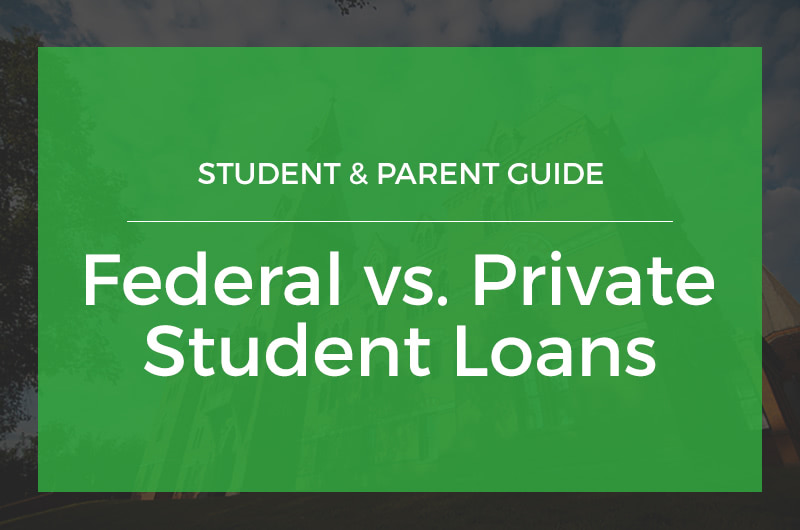
The FAFSA (Free Application for Federal Student Aid) is the single most important tool to help in providing student aid and helping reduce the cost of college. All students AND their parents must file this form in order for the student to benefit from free and low-cost federal financial aid.
College is expensive and even parents who have diligently saved for their children’s education could benefit from the federal aid that FAFSA could potentially provide.
Understanding the basics of how the FAFSA works and what information you need to submit through this application may help make the process less overwhelming.
Why Is It Important for Students AND Parents to File The FAFSA?
The FAFSA is a form created and administered by the federal government to determine eligibility for financial aid. Schools receive a copy of the FAFSA and use the information provided to put together an appropriate financial aid package for each student. Depending on eligibility, a student’s financial aid package may include a combination of free need-based grants, merit-based scholarships, low-cost loans, and work-study programs.
All students must fill this application to access federal and institutional financial aid. If the student is dependent on their parents, then the parents too can and should fill a separate FAFSA application.
While filling this application can be a daunting prospect for those who may prefer not to file it at all, not doing so could potentially cost the student financial aid for college. In fact, NCAN reports that in 2023, $4 billion in Pell Grants were unclaimed because families did NOT file FAFSA.
Understanding Your Child’s Dependent Status
The majority of students applying to college are dependent on their parents. Parents of dependent students play a key role in determining the student’s eligibility for financial aid.
The dependency status for FAFSA purposes has its own unique criteria. This is quite different from the criteria used to define dependency in many other fields, such as on tax returns.
For FAFSA purposes, a student is considered a dependent if they meet these criteria:
- Younger than 24 years
- Completing a degree other than a master’s or doctorate
- Unmarried
- Not an active-duty military member or veteran
If your student meets all of the above criteria, the FAFSA considers them as dependent students. All students who come under this category are required to submit their parents’ financial information on the FAFSA. If you do not provide this information for whatever reason, your child’s FAFSA will remain incomplete. This will cut your child off from qualifying for several forms of financial aid.

Understanding Parent Demographics
The FAFSA form has a section where you have to provide your marital status. This is to determine if you identify as the contributor and if additional contributors are needed.
Follow this guide to select your marital status in the ‘Parent Demographics’ section:
- Select ‘Married (not Separated)’ if you are currently married
- Select ‘Single (Never Married’ if you are not currently married
- Select ‘Unmarried and both legal parents living together’ if you are divorced or separated but currently living together
- Select ‘Divorced’ if you are divorced and not currently living together
- Select ‘Separated’ if you and your spouse are separated and not currently living together.
- Select ‘Remarried’ if you are divorced or separated from your child’s other legal parent but remarried.
Which Parent Should File The FAFSA?
Only one parent can file the FAFSA on their child’s form. This parent is called the contributor. The contributor is responsible for providing information, consent and approval for the transfer of federal tax information, and signing on the form. The Department of Education has very specific guidelines as to which parent can be a contributor based on various family dynamics.
A are a few different scenarios that you need to know:
1 – You and the student’s other legal parent Are married to each other:
- Only one parent is required as a contributor if you file taxes jointly.
- Both parents are identified as contributors and each must provide their individual consent, approval, and information on the form.
2 – You and the student’s other legal parent live together:
- Both parents are identified as contributors and each must provide their individual consent, approval, and information on the form.
3 – You provided more financial support to the student than the student’s other legal parent over the past 12 months:
- You are identified as the contributor and must provide your consent, approval, and information on the form.
3.1 – You provided more financial support to the student than the student’s other legal parent over the past 12 months but have remarried:
- You must provide your information and your spouse’s information on the form. If you did not file taxes jointly with your spouse, the child’s stepparent will also be identified as a contributor.
4 – You have a greater income and assets compared to the student’s other legal parent:
- You are identified as the contributor and must provide your consent, approval, and information on the form.
4.1 – You have a greater income and assets compared to the student’s other legal parent and are remarried:
- No additional parent will be identified as a contributor on your child’s FAFSA form.
5 – You have lower income and assets compared to the student’s other legal parent:
- You will not be identified as a contributor on your child’s form.
Understand Parent Financials
The FAFSA makes it easy to transfer your federal tax information directly from the IRS into the form but there is still some information you will need to fill in. For the 2025 – 26 FAFSA form, you will need to submit information related to your 2023 tax return. This is some of the information you need to provide:
- Your tax filing status and whether you filed individually or jointly with your spouse
- Total of your cash, checking, and savings accounts
- Net worth of your investments, including real estate
- Net worth of your businesses and investment forms
- Size of your family and if it has changed since filing your 2023 tax return
- Number of people in your family who will be in college between July 1, 2025 and June 30, 2026
- Federal benefits you or anyone in your family received
- Child support received
- Dollar amount of college grants, scholarships, or AmeriCorps benefits reported as income to the IRS
- Dollar amount of Foreign Earned Income Inclusion
- If you received Earned Income Credit
ALWAYS Complete the FAFSA Regardless of Your Income
Many parents who earn higher incomes don’t feel the need to file the FAFSA. This is because they are under the false notion that students from higher income families will not qualify for any financial aid. This is not necessarily true.
No matter how much you earn, it’s important that you complete the parent portion of the form correctly. Filing the FAFSA qualifies your child to benefit from different types of free and lower-cost aid. Only students who have filed the FAFSA can get access to certain types of aid such as Pell Grants and federal student loans.
The details provided on the FAFSA will also be used to assess your child for other forms of student aid. This includes need-based aid and merit-based aid. State governments as well as public and private colleges base their financial aid decisions on the information entered on the FAFSA.
You never know what aid your child may qualify for or what aid they may need to meet their college costs. This is what makes filing the FAFSA so important. You can decline any part of the aid package if you don’t need it but you cannot get any form of aid if you fail to file the application.
Time to Fill the FAFSA – Here’s What You’ll Need
Although filling in the FAFSA is relatively straightforward, it does ask for a whole lot of details. It can take a while, if you’re filing for the first time. Having all your details ready and on hand will help streamline the process.
Information you will need to fill in:
- Your Social Security number
- Your child’s Social Security number
- Your spouse’s name, date of birth, Social Security number and email address (If you’re married)
- W-2
- Tax return documents, including federal income tax returns, W-2s, and other records of money earned from work
- Your spouse’s tax information (If you’re married and did not file taxes jointly with your spouse)
- Untaxed income records (if it applies to you)
- Current bank statements – savings accounts and checking accounts
- Current assets
- Real estate investments excluding your primary residence
- Investments in stocks and bonds excluding money held in qualified retirement accounts
- Additional investments such as trust funds, college savings funds, and emergency funds
- Records of child support received
Keep in mind, that for the W-2, taxes, and income records you’ll use the information from two years ago. This is called prior-prior year filing. Essentially, it ensures you don’t have to wait on current forms to update in order to file the FAFSA.
Tip About the FAFSA for Parents: Glance through the copy of the FAFSA before you begin filling it out. Then make sure you have all the necessary documents ready before you get started. Most importantly, keep your income information and tax details ready as you will need them.
FAFSA for Parents: How to File
You need to create a Federal Student Aid (FSA) account in order to access the FAFSA form. What’s important to remember is that you and your child cannot share the same FSA account. You must have a separate FSA account that you use to apply for, receive, and manage federal student aid.
a simplified step-by-step to filing a FAFSA as a parent:
1: Create your Federal Student Aid (FSA) account. This will automatically generate a unique FSA ID.
2: Use your newly generated FSA ID to log into your FSA account start a new FAFSA.
3: Fill in your details – marital status, financial information, income as reported on your most recent tax return, and current assets. You will also have to declare if you receive any federal benefits such as Medicaid or any other.
4: Sign and submit the completed FAFSA. Make sure to review all the details before submitting. Accuracy is crucial, as any wrong information can affect your child’s eligibility for financial aid. It can also affect the amount of aid they qualify for.
Take time to understand your role in your child’s eligibility for financial aid so they can avail of financial aid. This is one of the most important tips about the FAFSA for parents.
Want more help? Check out our FAFSA Landing Page.
| Lender | Rates (APR) | Eligibility | |
|---|---|---|---|
 |
5.50%-16.12%* Variable
3.99%-15.61%* Fixed
|
Undergraduate and Graduate
|
VISIT CITIZENS |
 |
5.54% - 15.70% Variable
3.99% - 15.49% Fixed
|
Undergraduate and Graduate
|
VISIT SALLIE MAE |
 |
4.63% - 17.99% Variable
3.49% - 17.99% Fixed
|
Undergraduate and Graduate
|
VISIT CREDIBLE |
 |
6.00% - 13.75% Variable
3.99% - 13.75% Fixed
|
Undergraduate and Graduate
|
VISIT LENDKEY |
 |
5.66% - 14.72% Variable
3.69% - 14.56% Fixed
|
Undergraduate and Graduate
|
VISIT ASCENT |
 |
3.70% - 8.75% Fixed
|
Undergraduate and Graduate
|
VISIT ISL |
 |
5.62% - 16.85% Variable
3.69% - 16.49% Fixed
|
Undergraduate and Graduate
|
VISIT EARNEST |
 |
5.00% - 14.22% Variable
3.69% - 14.22% Fixed
|
Undergraduate and Graduate
|
VISIT ELFI |





